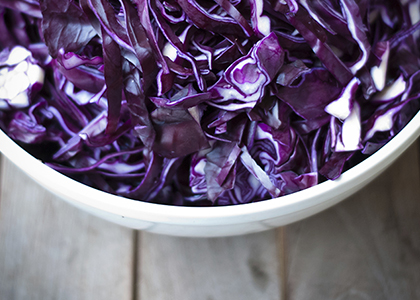
9 Fun Facts You Didn’t Know About Fruits & Veggies
By Stacy Kennedy, MPH, RD, CSO, LDN; Reboot Nutritionist
In a world that really needs to eat more vegetables (Americans only consume about 1-2 servings per day at best), I’d say we can all celebrate by adding more greens, red, oranges, etc. to our plate today, and every day. To make your vegetable consumption more fun, here’s some fun facts that will get you thinking twice about what you’re adding to your colorful plate.
- Avocado is actually a fruit.
Sadly, fruits are often seen as comparable to candy and demonized as the type of sugars contributing to modern illness. Before you shrink back from your avocado in fear of its sugary sweet evilness, let’s take a closer look. Avocado is a powerhouse of healthy fats with fiber, protein and very little carbohydrate at about 6 grams per half. Try some of my favorite avocado recipes like Island Green Smoothie, Tropical Avocado, Papaya and Ginger Salad, and Fresh Veggie Enchiladas - Summertime seasonal “veggies” are not what they seem.
Produce like tomato, zucchini, summer squash & cucumbers that you find in the farmers’ marker during the warmer season are fruits, not veggies! - Same with the fall produce.
Fall favorite veggies including pumpkin and butternut squash are also fruits. - There’s no nut in coconut.
Coconut isn’t a nut or a veggie, but a fruit. - The king of the hill is cabbage.
Cabbage is the veggie that has the most nutritional bang for your buck. Cabbage is a nutritional-powerhouse, cruciferous vegetable rich in antioxidants and anti-inflammatory compounds, as well as sulfur-based phytonutrients like glucosinolates linked to supporting natural liver detoxification processes and inhibitory effects on certain cancers such as breast and ovarian. Cabbage is highly affordable at about 40 cents per pound. - The skin of a cucumber help your skin.
Cucumbers (yes, also a fruit) have with compounds for healthy skin and cholesterol lowering phytosterols in the peel. - You can actually eat squash blossoms.
Squash blossoms, the edible flower portion of the squash plant (green zucchini and yellow summer squash), are wonderful for stuffing, kind of like a wrap or quesadilla without all the extra carbs and calories, or as a topping for your favorite pizza or frittata. Think stuffed pepper meets flower. Besides being beautiful and light, they contain antioxidants like Vitamin C and yellow, carotene based phytonutrients. . You’ll see these beautiful, large yellow blossoms if you grow squash in your garden. - Pungent may mean healthier.
Pungent and flavorful scallions and spring onions are full of nutrition. Calcium, potassium, Vitamin K, folate, Vitamin C and magnesium are just a few benefits you’ll find in this potent summer favorite. - The red in red onions is super nutritious.
Red onions, also called Spanish onions, not only possess the onion/garlic family allium phytonutrients but also flavonoids like quercitin, giving them that well-known purplish hue. Flavonoids like quercetin act as antioxidants and are linked with helping to protect against heart disease, reducing blood pressure and lower risk for certain types of cancers. They’re also a source of fiber and vitamins and minerals like B vitamins, calcium and Vitamin C.